Swing Time Glory: The Beat That Defined a Generation
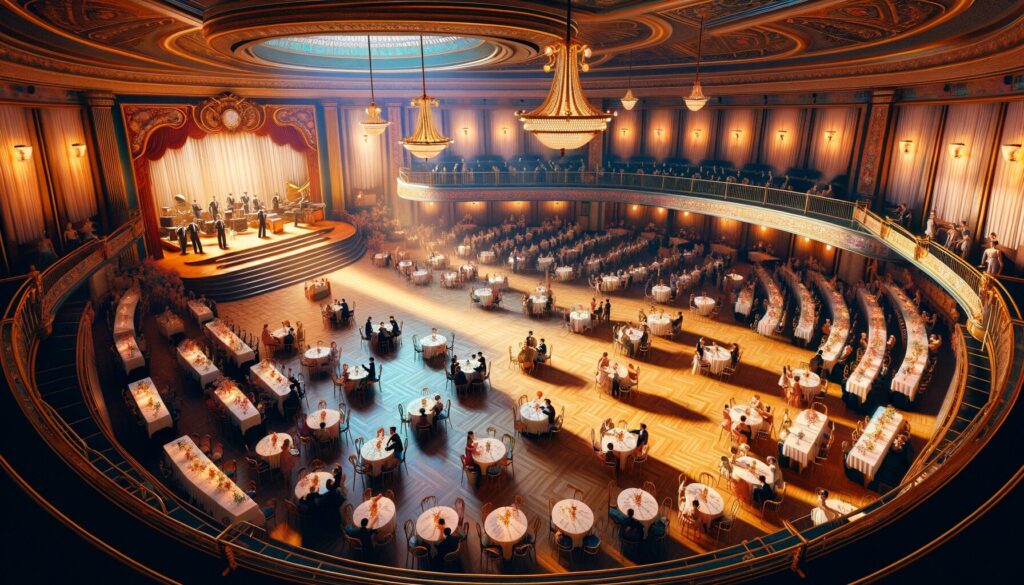
Setting the Stage: America Before Swing
In the fervent crucible of the 1930s, America was a mosaic of potential, poised on the cusp of a cultural metamorphosis.
The Prohibition era had waned, but its shadow still loomed, infusing the nation with a yearning for liberation, a thirst unquenched by the mere repeal of a constitutional amendment.
This was the epoch before the Swing—an era agog with the syncopated rhythms of industry, yet insatiably hungry for a music that could encapsulate the spirit of freedom, the exuberance of the American Dream unfettered.
Harlem’s Heartbeat: The Birthplace of Swing

Into this milieu, Harlem emerged not merely as a neighborhood but as the throbbing epicenter of an imminent jazz renaissance. It was more than a geographical heartland; it was a pulsating hub of African American culture, a cornucopia of innovation and artistry where every street corner teemed with the nascent beats of swing. The Apollo Theater, a beacon of Black excellence, hosted titans of melody and rhythm who would soon become the vanguards of the Swing Era.
As night fell, the Savoy Ballroom’s doors swung open to a symphony of feet gliding, swiveling, and soaring through the air—Lindy Hoppers like Frankie Manning revolutionized dance with aerials that defied gravity and social norms alike. This was not merely dance but a kinetic manifesto of freedom, each step a defiant stride against the strictures of the quotidian.
Swing rose from the embers of ragtime and the blues, borrowing from the grandeur of European orchestration, yet it remained deeply rooted in the African American experience—its rhythms a complex dialogue between the past and a boundlessly optimistic future. The music was a mélange of the sultry and the swift, a harmonic alchemy that turned brass and string into gold. It spoke in a language of elegance and effervescence, of sophistication and spontaneity—a dialect of dreams being woven into reality.
“The Dawn of Swing” was not just an evolution of jazz; it was a revolution, an auditory emblem of an era that danced on the edge of monumental change. It was the sound of a generation unfurling its wings, ready to take flight into a horizon ablaze with possibilities. Swing was more than music; it was the beat that defined a generation.
Big Bands, Bigger Impact: The Architects of Swing
Benny Goodman:
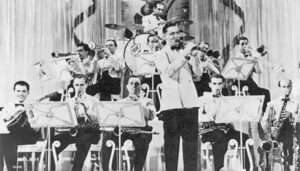
The King of Swing, his clarinet a scepter, ruled the airwaves of an era electrified by his band’s vibrant cadences.
They were not merely musicians; they were alchemists of rhythm, transmuting brass, woodwind, and string into sonic gold.
As “The King,” Goodman’s coronation was not of blood, but of beats—his influence a tapestry of riffs and refrains that would define an epoch.
Count Basie:

The Count of Rhythm, undeniably royalty in his own right, Basie’s fingertips danced across ivory keys with a regal grace that commanded attention.
With each concert, the Count and his orchestra painted the night with a palette of syncopated blues and a joie de vivre that charmed the nation.
His “One O’Clock Jump” didn’t just mark the time; it marked the beginning of a new cultural heartbeat.
Duke Ellington:

Sophistication in Swing, the very name Ellington conjures an elegance as timeless as the melodies he composed.
His was an orchestra that didn’t just play; it whispered and roared, wooed and wailed, articulating the human experience with brass and breath.
Ellington’s “Take the A Train” was more than a tune—it was a ticket to the sublime, a journey through the rich tapestry of American ingenuity.
These maestros, each a titan in their own right, weaved the backdrop against which America would swing into a future brimming with promise.
They were not just bandleaders; they were architects of aural cathedrals, their big bands the stones and mortar of an indelible musical movement.
This was the Swing Era: a symphony of progress, a crescendo of the American spirit.
Cab Calloway:

Cabell “Cab” Calloway III, a master of scat singing, was an iconic American jazz singer and bandleader known for his vibrant performances at the Cotton Club in Harlem. Calloway’s energetic style and charismatic stage presence made him a leading figure in the jazz music scene, celebrated for his ability to engage audiences and his contributions to the development of jazz as a major American music genre.
Fletcher Henderson:

Fletcher Henderson was a pivotal figure in American music, particularly in the evolution of big band jazz during the 1920s and beyond. As a bandleader, arranger, and pianist, he played a significant role in bridging the Dixieland and swing eras, influencing the sound, style, and instrumentation of big band jazz and paving the way for future generations of musicians.
Harry James:
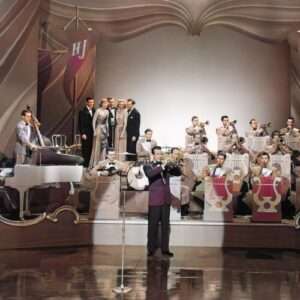
Harry James – Known for his virtuosic trumpet playing and leading one of the era’s most popular big band. Coming from a family of circus performers, he learned to play the trumpet at the age of 8 and went on to become an accomplished musician known for his virtuosic skills and sophisticated style, influencing the jazz and big band music scenes.
Glenn Miller:

Glenn Miller – His orchestra was among the most successful of the swing era, with hits that are still celebrated today.
He was key in shaping the sound of swing music in the 1930s and 1940s. His orchestra achieved fame with hits like “In the Mood” and “Moonlight Serenade,” and he became known for his innovative arrangements and contributions to the big band genre. Miller’s career was tragically cut short when he disappeared in 1944 during a flight over the English Channel during World War II
Swing’s Golden Age: The 1930s and 1940s
The Savoy Ballroom: Where Swing Was King
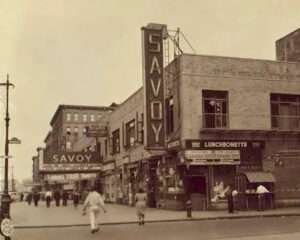
Amidst the tumult and turmoil of the 1930s and 1940s, the Savoy Ballroom stood as a bastion of Swing, its very walls pulsating with the new, vivacious rhythm that had taken America by storm.
Here, in this hallowed hall, Swing was more than music—it was monarchy, and the Savoy its palace.
This was a place where the beats were as hot as the Harlem nights, and every evening was an apotheosis of the Swing Era’s exuberance.
Swing Goes to Hollywood: Jazz on the Silver Screen

Swing then sashayed its way onto the silver screen, with Hollywood becoming a megaphone for this majestic musical movement.
Jazz-infused soundtracks became the heartbeat of cinema, their rhythms coursing through film reels, endowing stories with a tempo that matched the nation’s pulse.
In black and white, the silver screen glittered with the Swing’s golden age charm, a tableau of the times that danced to the beat of an irrepressible drum.
The Swing Era was a symphony of extremes, its crescendos a reflection of the heights of human joy and its diminuendos a mirror to the depths of the era’s despair. It was an epoch where the music was a salve, a unifying force that soared above the cacophony of societal change—a melodic tide that swept across a country caught between the Great Depression and the great war.
In this golden age, Swing was not just a genre; it was the auditory emblem of an era, a rhythmic revolution that still echoes through the annals of time. It was the beat that defined a generation, and its legacy endures, a timeless testament to the power of rhythm, melody, and the indefatigable human spirit.
The Music That Moved a Nation: Swing as a Cultural Phenomenon
Swing and the American Dream: The Soundtrack of Hope
In the Swing era, the pulsing beats of big bands became the very rhythm of hope for a nation in the throes of monumental change.
As America trudged through the Great Depression and war clouds gathered, swing music emanated an irrepressible optimism.
The music of Benny Goodman and Count Basie wasn’t just entertainment; it was an aural embodiment of the American Dream, a melodic promise that tomorrow could be brighter than today.
Fashion and Dance: The Lindy Hop Takes Flight

The exuberance of Swing was matched only by the vivacity of its dance—the Lindy Hop.
In the ballrooms, especially Harlem’s illustrious Savoy, the dance floors became canvases for expression as dancers like Norma Miller and Frankie Manning flung and flew through the air.
Their moves were not just steps; they were statements of freedom and joy.
The fashion that accompanied the Lindy Hop was as bold and dynamic as the music itself, with flared skirts and wing-tipped shoes becoming the sartorial symbols of an era that swung not just to a rhythm, but toward a new cultural dawn.
In those golden years of the 1930s and 1940s, Swing was more than a genre; it was a cultural phenomenon that transcended music, influencing fashion, dance, and the very social fabric of the nation. It was during this Swing Time Glory that the beat truly defined a generation.
The Swing Formula: Breaking Down the Beat
The Role of the Rhythm Section: Driving the Swing

At the heart of the Swing era’s rhythmic revolution was the rhythm section, an assembly of bass, drums, piano, and sometimes guitar, that collectively served as the driving force behind the Swing.
The bassist, with the pulse of a metronome, laid the foundation, walking a line that was both a backbone and a launching pad for the band.
The drummer, a maestro of the beat, used brushes and cymbals to whisper or shout as the music demanded, turning timekeeping into an art form.
Together, they created a lattice of rhythm on which the entire edifice of Swing was built.
The Brass and Reeds: Voices of the Swing Era

As if the rhythm section’s cadence was a clarion call, the brass and reeds responded, their voices the most recognizable sound of the Swing era.
Trumpets blared, trombones slid, and saxophones crooned, each note a bold stroke on the canvas of rhythm painted by the rhythm section.
These sections conversed in a musical language of call and response, their brassy shouts and reedy replies creating a tapestry of sound that was dynamic and ever-evolving.
In this alchemy of harmony and rhythm, the brass and reeds were not just instruments; they were the narrators of the Swing story, each solo a subplot, every riff a dialogue, contributing to the grand narrative of the Swing era. The result was an infectious groove that compelled the body to move and the spirit to soar, encapsulating the essence of an era where the beat went on, and indeed, defined a generation.
From Clubs to Concerts: Swing’s Venues and Audiences
Carnegie Hall Swings: Jazz Meets Classical:

When the sanctified arches of Carnegie Hall first reverberated with the syncopated surge of Swing, it was a declaration that jazz had not merely arrived; it had ascended.
In this revered hall, Gershwin’s Rhapsody melded the heart of jazz with the soul of classical, crafting a new lexicon of American music.
The concert hall, once the preserve of the European classical tradition, now swayed to the American rhythm of Swing, illustrating a profound cultural synthesis.
On the Airwaves: Swing Hits the Radio:
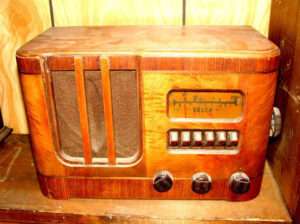
The golden age of radio broadcast Swing from the metropolitan epicenters to the rural outposts, transforming every living room into a Swing palace.
The airwaves became arteries of sound, pumping the Swing beat into the heart of America.
The Big Band broadcasts were not just shows; they were sonic communal gatherings, where the nation found a common rhythm.
This was where Swing met the American Dream, as families, separated by miles, found unity in the ubiquity of the Swing rhythm.
In a time of transformation, Swing’s venues were as varied as the notes in a Duke Ellington score, from the intimacy of underground clubs to the grandeur of concert halls, and into the ether of radio waves.
These spaces were crucibles where Swing’s venues and audiences forged an indelible mark on the cultural landscape, and the beat that defined a generation became the music that moved a nation.
Swing During Wartime: A Light in the Darkness
Swing as Morale Booster: From USO to V-Discs

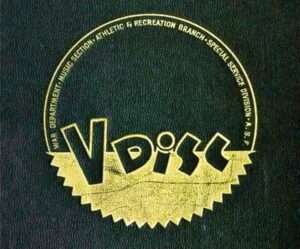
As the tumult of World War II engulfed the globe, Swing music emerged as a radiant beacon of solace and solidarity.
From the USO shows that brought the comforting strains of home to soldiers abroad to the V-Discs that spun melodies of hope and perseverance, Swing buoyed the spirits of a world at war.
Swing on the Home Front: Dance Halls and Victory Gardens
The dance halls back home teemed with life, as each Swing note offered an escape, a brief respite in a world of uncertainty. Victory gardens flourished not just with fruits and vegetables but with the vibrant rhythms of the Big Band sound, a testament to the resilience and indefatigable optimism of the era.

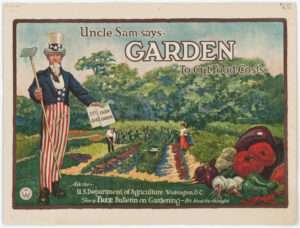
Jazz Under Fire: Swing Musicians in the Military

During World War II, swing music and its musicians played a pivotal role both on the home front and in the military.
Jazz musicians who enlisted or were drafted into the military brought with them the rhythms and melodies of swing, which had dominated the American music scene since the 1930s.
These musicians, such as Glenn Miller, who led the Army Air Force Band, and Artie Shaw, who led a Navy band, used their music as a tool for boosting morale among the troops and as a symbol of the cultural values for which the Allies fought.
The presence of jazz in the military transcended mere entertainment.
For many soldiers, it was a reminder of home, a testament to the cultural diversity and freedom of expression that defined America.
Bands like Miller’s and Shaw’s toured military bases and battlefronts, providing soldiers with a much-needed respite from the horrors of war.
The music they played, from spirited swing to soothing ballads, served as both a comfort and a rallying cry, embodying the resilience and indefatigable spirit of those who fought.
Moreover, jazz’s role during this era highlighted its significance as a unifying force, bridging racial divides and fostering a sense of camaraderie among servicemen of all backgrounds.
The integrated bands that performed for the military were a stark contrast to the segregation that existed within the armed forces and back home, previewing the civil rights advances that would come in the post-war years.
In essence, swing musicians in the military were not just entertainers; they were cultural ambassadors, wielding their instruments as weapons against despair and symbols of hope.
Their music underscored the worth of the fight, ensuring that even in the darkest times, the human spirit—and the swing beat—would persist, unquelled and vibrant.
Swing’s Technological Tempo: Innovation in Jazz’s Golden Era
Cutting Rhythms: How Recording Tech Shaped Swing
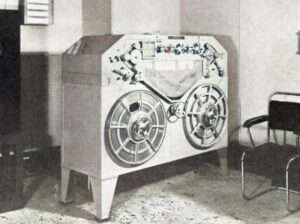
The emergence of magnetic tape recording in the late 1930s marked a pivotal moment in the evolution of Swing music, offering a level of fidelity that previous recording mediums simply could not achieve.
This technological advancement facilitated the capture of Swing’s dynamic energy and complex arrangements with unprecedented clarity and vibrancy, allowing the spirited harmonies and rhythms of live performances to be preserved with a newfound crispness.
The introduction of magnetic tape not only enhanced the quality of recorded music but also revolutionized the way Swing was disseminated and experienced.
Bands were no longer confined to the dance halls for their music to be heard; their performances could now be immortalized and enjoyed by a wider audience, extending the reach of Swing music far beyond its original live context.
This ability to record and reproduce sound with such high fidelity meant that the vivacity and spontaneity of Swing could be captured and relived, ensuring the genre’s enduring legacy and influence.
Magnetic tape’s impact on music recording extended well beyond Swing, setting new standards for audio fidelity across all genres.
It rapidly became the standard for master recordings of music and radio broadcasts worldwide, marking a significant leap in audio recording technology.
This innovation not only preserved the essence of live Swing performances but also paved the way for future advancements in music recording and production.
Electrifying the Bandstand: The Rise of Amplification in Swing

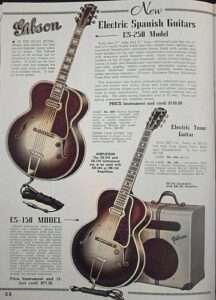
Quietest of instruments burst into the limelight.
The electrification of musical instruments, particularly guitars and basses, revolutionized the Swing era by enabling these instruments to be heard alongside the dominant brass and wind sections in big band settings.
Prior to the advent of amplification, guitars and basses struggled to be audible in larger ensembles and venues.
The introduction of electric guitars and basses in the 1930s marked a significant turning point, allowing these instruments to project more powerfully and contribute more significantly to the overall sound of swing bands.
Amplification technology allowed for a more balanced sound in large venues, ensuring that every instrument, regardless of its natural acoustic volume, could be heard clearly.
This technological advancement was crucial for the development of Swing music, as it enabled the rhythm section to provide a stronger, more pulsating force that propelled the music forward.
The increased volume and presence of the rhythm section enhanced the swing rhythm’s intensity and drive, making the music more dynamic and engaging for dancers and listeners alike.
One of the pioneering figures in the electrification of the guitar was Charlie Christian, who is credited with popularizing the electric guitar in jazz during his time with the Benny Goodman Sextet and Orchestra in the late 1930s and early 1940s.
His use of the electric guitar demonstrated its potential to be a solo instrument on par with the saxophone and trumpet in jazz ensembles, forever changing the role of the guitar in jazz and swing music.
Overall, the rise of amplification in Swing music was a game-changer that enabled a richer, more vibrant sound and contributed to the genre’s massive popularity during the Swing era.
This technological innovation ensured that Swing music could captivate audiences in large dance halls and ballrooms, contributing to its enduring legacy.
Broadcasting the Beat: Swing Music and the Growth of Radio

Radio waves carried the heart of Swing into American homes.
The accessibility of Swing music through radio broadcasts was pivotal, transforming it from a live experience to a daily soundtrack.
The intimacy of radio created stars overnight and Swing bands became household names, their melodies a constant companion to a nation in motion.
These advancements collectively forged a path for Swing that echoed into the cultural fabric of the era.
It was not just the beat that defined a generation but the innovative spirit behind it, ensuring that the Swing era would resonate through time.
The Decline Of The Swing Era
The decline of the Swing Era was due to a confluence of factors. Economic constraints, particularly after World War II, made the big band model financially unsustainable.
Musicians had to be paid, and with up to twenty or more in a band, the costs could be exorbitant.
Additionally, the war had taken many musicians overseas, and those who returned were often lured away by the freedom and creativity offered by smaller groups, leading to the rise of bebop and other forms of jazz.
Another significant factor was a change in public taste.
By the end of the 1940s, the American public was ready to move away from the memories of war, and swing music was closely associated with the war years.
Younger audiences sought new forms of music that reflected the changing times, leading to the popularity of genres like bebop and later rock and roll.
Technological advances also played a role.
The improvement of music recording technology meant that high-quality music could be enjoyed at home or in smaller venues without the need for a live big band.
Radio broadcasts of swing music had given way to television, and new sounds were emerging that suited the medium better.
Furthermore, the economics of dance music had changed.
Dance halls, which had been the primary venues for swing music, were in decline.
People were increasingly listening to music in their homes or in smaller venues, which favored smaller bands over large orchestras.
In summary, the end of the Swing Era was brought about by a combination of economic, social, technological, and cultural shifts that occurred in the post-war United States.
The Legacy of Swing: Influences on Modern Genres
From Bebop to Country to Hip-Hop: Tracing Swing’s Descendants
Swing’s robust rhythms didn’t just evaporate as the big bands disbanded; they morphed, sparking the inception of Bebop.
This intricate jazz style, with its improvisational bravado and complex chord progressions, was birthed from Swing’s vivacity.
Musicians like Charlie Parker and Dizzy Gillespie stood on the shoulders of Swing giants, crafting a new jazz dialect.
Then there’s Western swing, which married the swing jazz style with country music influences.
This blend has created a unique sound that resonates with fans of both genres, showcasing the versatility of swing rhythms.
Fast forward, elements of Swing’s rhythmic bounce found their way into the DNA of Hip-Hop.
The genre’s reliance on samples saw Swing-era classics spun anew, beats that once filled dance halls now underpinning the poetry of urban storytelling.
For example, “Take the A Train” by Duke Ellington, a Swing classic, has been sampled in Hip-Hop tracks, tying the past to the present with a rhythmic thread.
Other new styles have also emerged that depend on swinging rhythms to carry things along.
Sideways Swing: Jump Blues
Jump blues is an up-tempo style of music that blends elements of blues, jazz, and boogie-woogie.
It is characterized by its lively rhythm, often featuring horn instruments and played by small groups.
Originating in the 1940s, jump blues became a precursor to rock ‘n’ roll and R&B music, marking a significant shift from the big band music of its time to a more popular, accessible genre.
This music style is known for being highly danceable, with a consistent rhythm that encourages swing dancing.
It played a crucial role in the evolution of American music, setting a pattern that influenced the dominant Black popular music form during and after its peak popularity.
The economic constraints of World War II contributed to the emergence of this hard R&B style, as bands sought to maintain a vibrant sound with smaller ensemble.
Some representative artists of the Jump Blues genre, known for their energetic and rhythmic style that laid the groundwork for rock ‘n’ roll and R&B, include:
- Alberta Adams
- Sil Austin
- LaVern Baker
- Big Maybelle
- Big Joe Turner – Specifically noted for his contributions as an innovator in the jump blues genre.
- Louis Jordan – Another key figure in jump blues, known for his significant impact on the genre.
- Tiny Bradshaw
- Jackie Brenston
Swing Revival: The Timelessness of Swing
As if in cyclical homage, the ’90s saw a Swing revival, a renaissance that swept through clubs with a new generation jitterbugging to neo-Swing bands.
This revival wasn’t mere nostalgia; it was testament to Swing’s timeless groove, an affirmation that the essence of Swing can be reborn, refreshed, yet resonate with the familiarity of its golden era.
The Brian Setzer Orchestra and Big Bad Voodoo Daddy are prime examples of this revival, blending classic Swing with modern sensibilities to create music that transcends time.
Swinging to the Future: The Evolution of Jazz
Neo-Swing and Retro Swing
Neo-swing, also known as retro swing, is a genre of music that represents a revival of swing music, combining traditional swing elements with influences from other genres such as rockabilly and punk rock.
This movement began in the 1990s, marked by a renewed interest in both swing music and the Lindy Hop dance.
The swing revival was characterized by its blending of old and new, appealing to audiences with a mix of nostalgic swing tunes and modern musical sensibilities.
It is part of a broader cultural revival of retro styles and was noted for bringing swing music back into the public eye, albeit with contemporary twists that made it accessible to a new generation of listeners and dancers.
Check out some of these artists
- HepCat Daddies – A band known for their modern swing music, blending classic swing elements with contemporary influences.
- Greg Poppleton & his Bakelite Dance Band – They offer a unique take on swing, infusing it with a nostalgic yet fresh sound.
- Speedswing – This group brings an energetic approach to modern swing music.
- Jonah Jones – A musician celebrated for his contributions to the modern swing genre.
- Jonathan Stout and his Campus Five – They are known for their authentic swing music performances.
- Indigo Swing – This band is noted for their revivalist approach to swing music.
- Hot Sugar Band – Known for their lively performances and contributions to modern swing.
- King Of Swing Orchestra – They offer a big band swing experience with a contemporary twist.
- The Jive Aces – A high-energy band known for their infectious swing music.
- Norbert Susemihl – Celebrated for his contributions to both traditional and modern swing sounds.
- Steve Lucky and the Rhumba Bums – Known for their lively retro swing performances.
- Ingrid Lucia and the Flying Neutrinos – A contemporary group with a style deeply rooted in traditional swing.
- Mora’s Modern Rhythmists – A band that revives the vibrant swing music of the 1930s and 1940’s.
- Vince Giordano & The Nighthawks – A collaboration that brings classic swing to the modern era.
Electro Swing And Swing House
Electro Swing and Swing House are both genres that blend vintage swing music with modern electronic music, but they have different focuses.
Electro Swing often emphasizes a stronger influence from vintage swing, jazz, and big band music, and it may incorporate elements like brass, piano, and double bass, often with a more pronounced vintage feel.
Swing House, on the other hand, leans more towards the house music side, featuring electronic dance beats with swing samples, creating a sound that’s more rooted in the rhythm and energy of house music.
Essentially, while both genres mix old and new, Electro Swing tends to preserve more of the traditional swing sound, whereas Swing House takes on a more modern, club-friendly electronic vibe.
Examples of artists in these genres are
- Caravan Palace – A French band known for integrating classic swing music with electronic beats, creating a unique and modern sound.
- Parov Stelar – Often credited with pioneering the Electro Swing sound, this Austrian musician brings a blend of jazz, house, and electro in his music.
- The Electric Swing Circus – A British live electro-swing act that fuses cool 20’s swing with stomping electro beats.
- Tape Five – A multinational European band known for their cosmopolitan swing pop.
Numerous mainstream straight-ahead jazz artists have devoted themselves, both stylistically and substantially, to the swing genre, embracing it with a purist’s dedication throughout their careers.
Other modern contemporary jazz musicians and bands have incorporated electronic instruments and production techniques into their music, creating a new sound that honors the past while sounding fresh and modern.
Artists like Robert Glasper and Thundercat fuse traditional jazz elements with electronic sounds, showcasing how Swing’s essence can be translated into the digital age.
A Century Old And Still Going Strong
Swing music, with its infectious rhythms and compelling danceability, has carved an indelible mark on the landscape of American music and beyond. From its emergence in the late 1920s, it catalyzed a cultural revolution, providing a rhythmic backbone to the Jazz Age and the Big Band era. Icons like Duke Ellington, Benny Goodman, and Count Basie became household names, their orchestras embodying the swing era’s exuberance and its musical sophistication.
Swing’s significance extends beyond mere entertainment; it played a pivotal role in America’s social history, breaking down racial barriers and fostering a sense of unity during tumultuous times. Its beats provided a soundtrack for the significant cultural shifts of the 20th century, echoing through the halls of history as a symbol of resilience and joy amidst adversity.
As we move through the 21st century, swing music continues to evolve, its essence permeating contemporary genres. It influences modern jazz musicians who blend traditional swing elements with new sounds, ensuring that swing’s spirit remains vibrant and relevant. Electro swing, for instance, marries vintage swing with electronic music, introducing this timeless genre to a new generation and demonstrating its adaptability and enduring appeal.
The legacy of swing music is a testament to its importance as a cultural and musical force. It’s a genre that not only defined an era but also continues to inspire creativity and connection across generations. As we look to the future, swing music’s influence is unmistakable, promising to continue swaying audiences with its rhythm and energy, proving that it’s much more than a historical footnote—it’s a living, breathing part of our musical heritage.


